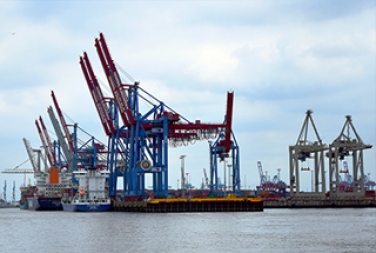Origin ETEM
ETEM
Energy-Technology-Environment-Model (ETEM) refers to an optimization-based modeling framework, which has been designed, developed and maintained by ORDECSYS since 2010. The designers of ETEM were involved in the development of MARKAL[1] models for Canadian provinces and several industrial sectors in Canada, between 1976 and 1988. They had also adapted MARKAL to the modeling of regional energy systems in Switzerland and were the first to implement a stochastic programming approach to manage uncertainty, between 1988 and 2005. ETEM has a similar structure to the TIMES models currently distributed by ETSAP. It is based on an open-source code, written in AMPL, a powerful modeling language, which allows the user to easily adapt, modify and extend the model to meet new challenges in the approach to energy modeling.
[1] MARKAL is a systems analysis approach to energy modelling that was developed and maintained by a committee of the International Energy Agency, ETSAP. MARKAL has evolved into TIMES, the energy modelling framework currently promoted and distributed by ETSAP.
Examples of ETEM applications
A linear programming model for power distribution with demand response and variable renewable energy
Abstracts of a few recent publications showing the variety of ETEM applications
A linear programming framework is proposed to model distribution network characteristics, and market clearing processes for flexible load and distributed energy resources providing reserve and reactive power compensation. One shows that the Nash equilibrium solution representing the interaction between utility and customers for demand response and distributed reserve transactions can be approximated by a linear program when the players (i.e. the customers) are numerous and tend to become infinitesimal. Then a linear program is shown to reveal the market prices, corresponding to the marginal cost for the utility. The goal in developing this model is to provide a new module for a regional long term model of development of smart energy systems. This module will then introduce in the modeling of energy transition, the new options and constraints that are provided by a penetration of renewables with the possibility of implementing distributed markets for demand response and system services permitted by the development of the cyber-physical layer. A case study of a potential smart urban distribution network in Europe is carried out and provides numerical results that illustrate the proposed framework.
Frédéric Babonneau, Michael Caramanis, Alain Haurie, 2016. A linear programming model for power distribution with demand response and variable renewable energy. Applied Energy, Pages 83-95, November 2016.
ETEM-SG: Optimizing Regional Smart Energy System with Power Distribution Constraints and Options
This paper gives a detailed description of the ETEM-SG model, which provides a simulation of the long-term development of a multi-energy regional energy system in a smart city environment. The originality of the modeling comes from a representation of the power distribution constraints associated with intermittent and volatile renewable energy sources connected at the transmission network like, e.g. wind farms, or the distribution networks like, e.g. roof top PV panels). The model takes into account the options to optimize the power system provided by grid friendly flexible loads and distributed energy resources, including variable-speed drive-powered CHP micro-generators, heat pumps, and electric vehicles. One deals with uncertainties in some parameters by implementing robust optimization techniques. A case study, based on the modeling of the energy system of the “Arc Lemanique” region, shows on simulation results, the importance of introducing a representation of power distribution constraints and options in a regional energy model.
Babonneau, F., Caramanis, M. & Haurie, A. ETEM-SG: Optimizing Regional Smart Energy System with Power Distribution Constraints and Options. Environ Model Assess 22, Babonneau, F., Caramanis, M. & Haurie, A. ETEM-SG: Optimizing Regional Smart Energy System with Power Distribution Constraints and Options. Environ Model Assess 22, 411–430 (2017).
Coupling a Power Dispatch Model with a Wardrop or Mean-Field-Game Equilibrium Model.
In this paper, we propose an approach for coupling a power network dispatch model, which is part of a long-term multi-energy model, with Wardrop or Mean-Field-Game (MFG) equilibrium models that represent the demand response of a large population of small “prosumers” connected at the various nodes of the electricity network. In a deterministic setting, the problem is akin to an optimization problem with equilibrium constraints taking the form of variational inequalities or nonlinear complementarity conditions. In a stochastic setting, the problem is formulated as a robust optimization with uncertainty sets informed by the probability distributions resulting from an MFG equilibrium solution. Preliminary numerical experimentations, using heuristics mimicking standard price adjustment techniques, are presented for both the deterministic and stochastic cases.
Frédéric Babonneau, Rinel T. Foguen, Alain Haurie and Roland Malhamé. Coupling a Power Dispatch Model with a Wardrop or Mean-Field-Game Equilibrium Model. Dynamic Games and Applications, pp.217-241. 2021.
Assessing a Transition to 100% Renewable Power Generation in a Non-interconnected Area: A Case Study for La Réunion Island
In this paper, we present a comprehensive, multi-timescale approach to evaluate energy transition policies aiming at fully renewable generation in power systems of non-interconnected areas, typically islands or remote regions. The approach links three dynamic models: (i) a capacity expansion model, ETEM-SG, proposes an investment and generation plan for typical days, up to 2030; (ii) a simplified dispatch model is used to validate the generation plan for a full year of weather data and demand variations; and (iii) a static and dynamic analysis of the power system is used to assess the stability of the new power system for rapid events such as a sudden reduction of renewable generation. The proposed three-step approach generates a cost-effective long-term investment planning that ensures the balance between supply and demand at an hourly time step and the stability of the power system at a timescale of milliseconds. The presentation is based on a case study fully described in a report [1] made with ADEME, the French Agency for Ecological Transition, for the French island of La Réunion. It shows how a reliable 100% renewable power supply is achievable by 2030, in this area.
Babonneau, F., Biscaglia, S., Chotard, D. et al. Assessing a Transition to 100% Renewable Power Generation in a Non-interconnected Area: A Case Study for La Réunion Island. Environ Model Assess 26, 911–926 (2021).
Energy Transition Pathways for Deep Decarbonization of the Greater Montreal Region: An Energy Optimization Framework.
More than half of the world’s population live in cities, and by 2050, it is expected that this proportion will reach almost 68%. These densely populated cities consume more than 75% of the world’s primary energy and are responsible for the emission of around 70% of anthropogenic carbon. Providing sustainable energy for the growing demand in cities requires multifaceted planning approach. In this study, we modeled the energy system of the Greater Montreal region to evaluate the impact of different environmental mitigation policies on the energy system of this region over a long-term period (2020–2050). In doing so, we have used the open-source optimization-based model called the Energy–Technology–Environment Model (ETEM). The ETEM is a long-term bottom–up energy model that provides insight into the best options for cities to procure energy and satisfies useful demands while reducing carbon dioxide (CO2) emissions. Results show that, under a deep decarbonization scenario, the transportation, commercial, and residential sectors will contribute to emission reduction by 6.9-, 1.6-, and 1-million-ton CO2-eq in 2050, respectively, compared with their 2020 levels. This is mainly achieved by (i) replacing fossil fuel cars with electric-based vehicles in private and public transportation sectors; (ii) replacing fossil fuel furnaces with electric heat pumps to satisfy heating demand in buildings; and (iii) improving the efficiency of buildings by isolating walls and roofs.
S. Aliakbarisani, F. Babonneau, O. Bahn, E. Delage, A. Haurie and A. Mashat. Energy Transition Pathways for Deep Decarbonization of the Greater Montreal Region: An Energy Optimization Framework, Energies, 15(10):3760 2022.
Transition to Zero-net Emissions for Qatar: The role of Hydrogen and Direct Air Capture
A bottom-up technology rich model ETEM-Qatar is used to assess different scenarios for a transition to zero-net emissions in Qatar. The key technologies involved in the transition include electric mobility, hydrogen, carbon capture and storage and direct air capture. Through numerical simulations it is shown that Qatar could (i) start immediately to foster hybrid and electric cars for mobility, (ii) develop electricity generation from solar sources, (iii) develop carbon-free hydrogen production, (iv) introduce carbon capture and storage in all industrial sectors and, (v) develop actively direct air capture with carbon capture and storage to produce emission permits to be sold on an international carbon market. In the long-term, carbon-free hydrogen exports and emission permit sales could contribute to compensate the gas exports revenue losses that are expected in a global zero-net emissions context.
F. Babonneau, M. Benlahrech and A. Haurie. Transition to Zero-net Emissions for Qatar: The role of Hydrogen and Direct Air Capture, Energy Policy, 170, 113256, 2022.
Energy Technology Environment Model with Smart Grid and Robust Nodal Electricity Prices
This work deals with the modeling of power flow in a transmission grid within the multi-sectoral multi-energy long-term regional energy model ETEM-SG. This extension of the model allows a better representation of demand response for flexible loads triggered by nodal marginal cost pricing. To keep the global model in the realm of linear programming one uses a linearized DC power flow model that represents the transmission grid with the main constraints on the power flowing through the different arcs of the electricity transmission network. Robust optimization is used to take into account the uncertainty on the capacity limits resulting from inter-regional transit. A numerical illustration is carried out for a data set corresponding roughly to the Leman Arc region.
Babonneau, F., Haurie, A. Energy technology environment model with smart grid and robust nodal electricity prices. Ann Oper Res 274, 101–117 (2019).
Assessing electric mobility and renewable energy synergy in a small New Caledonia Island community.
In this work, we evaluate the synergy between variable renewable energy (VRE), electric mobility, and Vehicle to Grid (V2G) deployment for a small community transitioning to a low-carbon economy. We propose an integrated deterministic modeling approach that accurately describes electric mobility activity within the electric grid in the ETEM-SG long-term capacity expansion model. This approach allowed us to keep the entire approach in the linear programming domain. We then perform a scenario analysis on the Isle of Pines case. The results show that V2G is essential for electric vehicles to makea positive contribution to the electric system by providing a supply–demand balance service. The deployment of electric vehicles allows reaching a VRE penetration rate of up to 94%, at no additional cost compared to a solution without electric vehicles, and even with a global-cost reduction of up to 5.3% thanks to a decrease of the capacity of stationary battery packs needed for storage.
F. Babonneau, D. Chotard and A. Haurie. Assessing electric mobility and renewable energy synergy in a small New Caledonia Island community, International Journal of Green Energy, 2024, n0. 4, 827-841.





